#DEFINITELY Shakespeare's version and not The White Queen/Princess
Text
Hero is attracted to villain due to: *sexual chemistry*
Me: Good, but I in particular crave something more.
Hero is attracted to villain due to: *competence, wit, mind game ships*
Me, banging my knife and fork on the table: THAT'S WHAT I'M TALKING ABOUT
#heroes#villains#guess who just read a Richard III x Elizabeth of York fanfic that hit ALL my right spots#DEFINITELY Shakespeare's version and not The White Queen/Princess
85 notes
·
View notes
Text
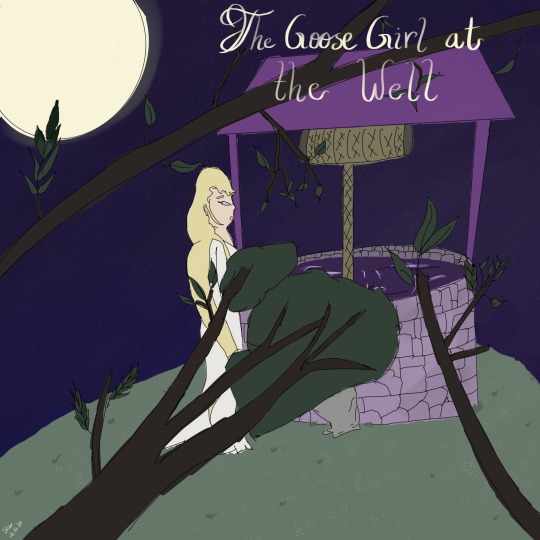
Grimmtober Day 18: Goose Girl at the Well
But how astonished he was, when she went to the well, took off the skin and washed herself, when her golden hair fell down all about her, and she was more beautiful than any one whom he had ever seen in the whole world.
--
This story is an ATU type 923, and is a bit tricky to follow as many things seem to happen at once. But that's part of the fun imho. It is told like so:
There was an old woman who tended geese in the wastes in the middle of the mountains. One day, when she was down in the forest collecting sticks, she came across a handsome count. She persuaded him to carry the bundle up the mountain, with nary a moment to rest though it seemed to get heavier and heavier with each step. Still the man went on without complaint. When they reached the old woman’s hut, they were greeted by the geese, and the old woman’s daughter — who seemed to be an ugly old woman herself.
The Old Woman promised to repay the count for his help, but sent her daughter away, for she would not have them alone together lest he fall in love with her. The man found the sentiment funny, and took a moment to rest under an apple tree. The old woman approached him after his nap and handed him a box cut from an emerald. She told him to care for it well for it would bring him good fortune. The count thanked her for the gift and set off.
He wandered through the forest for three days, unable to find his way out. When he finally made it to civilization, it was an unfamiliar kingdom. The man sought audience with the king and queen. He showed them the box, and the queen took it for a closer look. But when she opened it, she fainted. The palace guards grabbed at the count, but as he was being led to the dungeons, the queen recovered and asked them to release him, for she wished to speak in private.
The Queen told him the story of her youngest and most beautiful daughter, who cried pearls and jewels. One day the king wanted to decided how to divide his kingdom after his death. He called all his daughters to him and asked them how much each loved him. The eldest two compared their love for him to magnificent things, but the youngest compared it to salt. Enraged, the king banished her into the wilderness. He later repented and had the forest searched for her, but she was never found, and the king and queen thought her dead.
When the Queen had opened the count’s box, she had found a pearl that was exactly like the tears of the youngest princess. The prince then shared his story about the old women and their geese in the forest. The three decided they would find the woman and ask about the whereabouts of the missing princess.
That night the Old Woman’s daughter went to a well. It was a full moon night, and there she removed a skin cloak that was covering her, and she became a beautiful maiden. She washed herself and the skin in the well, before the sound of a branch startled her. She threw her disguise back on and ran to the hut. There the old woman told her that today marked three years since she had been taken in, and it would be the last day she spent with her. The girl was upset, for she had no where else to go, but the old woman simply sent her to her room.
Meanwhile the count had become separated from the king and queen. He happened to stumble upon the girl, just before she took of her disguise, and was prepared to set a trap for her,thinking he could force her to give up the whereabouts of the missing princess. But once she took off the cloak, he was enthralled by her beauty and could think of nothing else. In his dazed state, he broke a branch, which startled her. When she ran, he set off after her.
While chasing the girl, he reunited with the king and queen, and told them of what he had just seen. The two were certain from his description that this was their daughter. The three reached the hut together, and the Old Woman greeted them warmly. She told the king and queen that they could have spared themselves a walk if they had not been so unjust to their daughter. She called the girl from her room and the family wept for joy at being reunited.
The old woman disappears, and the hut turns into a magical castle.
The translations I have seen of this story all end the same way: with a not from the narrators saying there’s more to it, but the narrator's grandmother could never remember the end. They like to think the princess married the count and that the flock of geese turned into young hand maidens and everyone lived happily ever after. I’d like to believe that too. Something about this project, as dark as it can get sometimes, makes me want to believe in happy endings a little more.
There’s also something charming about this little break in the fourth wall. It has a sort of Princess Bride vibe, where you feel like your being told the story, rather than reading it. Even the way the story is written doesn’t feel like a book, but more like listening to someone relate the tale, with all the tangents and spice that come with the act of oral storytelling.
You can definitely see the influences of other stories - the turned out daughter, the fairy godmother, and the girl so beautiful she produces jewels. Every part pulls together like a bedside story being made up as the speaker goes along. It’s a delight and I recommend you try and pull up an online version if you can. Just don’t get it mixed up with The Goose Girl, a totally different (but still good) story about a princess suffering grave injustice.
Also a fun side note, we can see that Shakespeare took inspiration from this story or a similar one, as the princess Cordelia shares a similar fate to our Goose Girl at the Well. I guess King Lear can join Snow White and Huntsman and Hansel and Gretel Witch Hunters as yet another dark and gritty reimagined fairytale.
#grimmtober#the brothers grimm#grimm's fairy tales#artober#artober2020#fairy tales#the goose-girl at the well#shiv's art
2 notes
·
View notes
Text
MAY PICKS
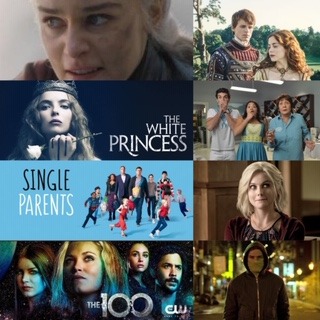
You seriously don’t realize how much you watch until you create a list like this. I’m even more shocked because at the start the semester was still on. Some nice picks this month. Check them out but be careful-as always-of spoilers.
GAME OF THRONES
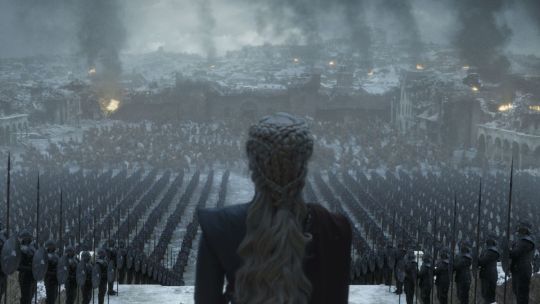
I could probably dedicate a whole post to talking about this finale (and final season for that matter), but at the same time I have spoken about it to so many people that I don’t know if I can continue to do so at this time. Either way, I’ll keep it brief here. :) Like others have said this season was a combination of disappointing and underwhelming. It was rushed. Six episodes were not enough to finish this story properly. One season should have been dedicated to the Knight King and another to Dany’s madness. (Or rather to taking her down.) So many plot holes were left unresolved. I bought the first book years ago and I am considering to actually start reading them.
THE SPANISH PRINCESS
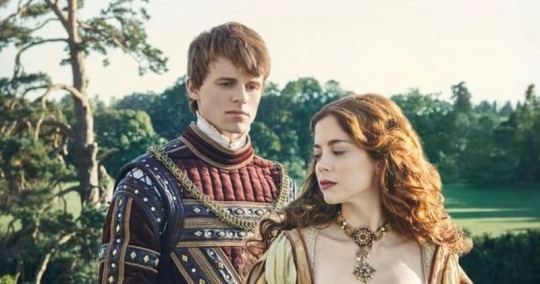
Starz’s third series in their Royal Collection tells the story of Catherine of Aragon as she comes to wed England’s Prince....Arthur. You heard me correctly. If you know your history you know who she actually marries and all the drama that will unfold, but nonetheless it is interesting to see how they portray the first wife of Henry VIII. (It actually made me do some research and I don’t know how I didn’t know they were married for so long before he married Anne Boleyn.) This series, just like the previous ones produced by Starz, is based on Phillipa Gregory’s books. So as expected they are not always the most historically accurate (but then would it be as interesting??) I did watch The White Princess before starting this series, but I don’t think you have to watch it. However, it will just make you feel like you know the family more. (See Binge-ing for my White Princess review.)
JANE THE VIRGIN

After all of my binge-ing earlier in the year I HAVE FINALLY CAUGHT UP!!! (Well, expect for this week’s episode--thanks baseball.) It’s always hard when you finish binge-watching a show or catch up to the live episodes. You have that feeling of: What do I watch now? Luckily the present season is still playing so I don’t have to experience that...yet. I’m even more upset now that it is the final season. I was a huge Michael fan when he was a regular on the show, but I was not overly happy when he returned. I felt like the show ran out of plot-lines and it wasn’t needed. I’m happy that this plot only was part of the season. Can’t wait to see where we’re headed!
SINGLE PARENTS

I AM SOOOO HAPPY THIS SHOW GOT RENEWED. I know it was on the bubble for a bit towards May sweeps and I am beyond excited that it got picked up. I’m actually shocked that I haven’t spoken about this show more on this page. It has become-HANDS DOWN-one of my favorites of the year. It definitely deserves a second season and I can’t wait to see what’s in store for us. Did you see that finale? I LOVE Will and Angie and I seriously thought we were close to a kiss at the end of this episode. Please give us that next season writers!! I also loved seeing Angie’s ex, ironically played by Leighton Meester’s actual husband. At the start of the season I did not see Poppy and Douglas becoming a thing and I love their relationship too. I’m so excited for next season!! **Just noticed this picture doesn’t have the real Amy and Emma, lol.
iZOMBIE

Another last season from a CW show. iZombie is such a great one and there is nothing else out there like it. Each time it comes back I remember how much I love it. At first I was really upset of it ending this year, but I feel like it will end on a strong note. I’m not sure what other plot-lines they could explore. This show has come so far from the original season when Liv and the other zombies were the minority to now a divided Seattle populated by zombies and humans. I feel like this show does a great job drawing a lot of parallels to the world we are currently in. The character development has been so strong that if you were watching the first season you might not recognize some of these characters. I am definitely going to miss this show. As well as all the brains that Liv has consumed over the series. Last week’s dancing episode was fantastic and I especially loved Ravi’s montage of learning to dance. Clive seriously has the moves.
THE 100
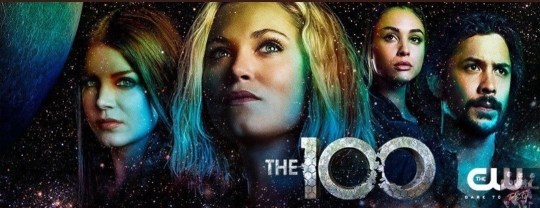
Just like iZombie, the 100 returned mid-season with its sixth season. As usual, I was excited for the new season because I love this show, but the promo released made me very confused in what this season would bring. I have only watched 2 of the episodes so far and it does feel like a new show (which I guess makes sense with the whole: End of Book 1). I felt like I needed to re-watch season 5′s season finale (which I didn’t) to remember everything that happened and why certain people were mad at each other. I have seen some spoilers (because I am behind and I follow the show’s official page), so I don’t know if I’m ready for the direction the show is going but I’ll be there to see where it goes.
BINGE-ING
THE WHITE PRINCESS
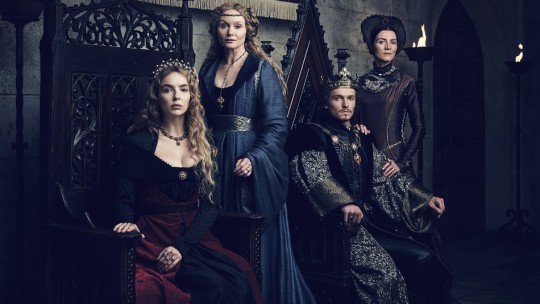
As mentioned earlier one of the shows I decided to binge-watch this month was Starz’s second series adapted from Phillipa Gregory’s books: The White Princess. In anticipation for watching The Spanish Princess (now currently airing) I decided it was a good time to watch it and one of my sister’s watched it previously and really enjoyed it, so I was excited to give it a watch. This show is only 10 episodes and I quickly watched the series. The beginning instantly captured my attention. I am definitely one for an arranged marriage where the couple does not like each other at first; as it was with Henry VII and Elizabeth. As the Tudors take the throne they join the houses of Lancaster and York. I had heard much of the War of the Roses but (even though I know this show is fabricated) this helped me understand it better. I also watched a behind the scenes segment about how they wanted to show the York side differently as many people are familiar with Shakespeare’s Richard III, etc. Years ago I tried watched the White Queen and just couldn’t get into it (the series before the White Princess). Now I might give it a try to see some of the earlier versions of these characters. If you enjoy historical romance dramas then this series is for you.
IRON FIST
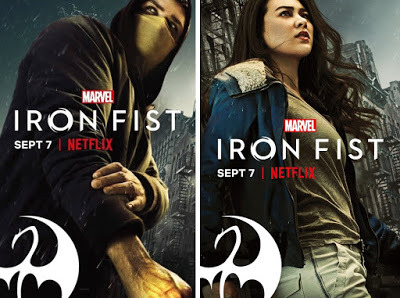
Last year I started watching the Marvel Netflix shows beginning with Daredevil. I had gotten up to the Defenders (which I did enjoy) but then needed to take a step back from this Marvel universe and watch something lighter. Unlike some people, I really liked the first season of Iron Fist. Previously I didn’t know anything about the character, so I liked learning about his backstory and why he had returned to New York City. Then I heard the great response the second season had gotten, so I am even more excited for this season. I am still early on, but am enjoying it so far. I have a lot of questions but I have a feeling they will be answered pretty soon. I know the show was cancelled so I might be disappointed by the ending, but maybe it will get picked up by the new Disney Streaming Service as many people suspect.
FUTURE SUMMER BINGE
THE WALKING DEAD

That’s right, I’m going for it. For the past couple of summer’s I’ve been checking off some big shows to binge and I thought why not watch Walking Dead. Back in the day I watched the first (maybe second) episode, but I only remember a couple of things. I’m ready for the journey!
GOOD OMENS
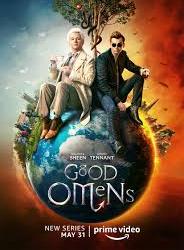
The Amazon Prime Original will be released May 31st and I am constantly seeing ads for it so I am getting more and more pumped. Only a couple more days.
So what are you watching? What are you excited to watch over the summer? Are there any shows I should add to my list? Let me know.
#game of thrones#game of thrones series finale review#starz spanish princess#catherine of aragon#Jane the Virgin#jane villanueva#jane the virgin the final season#single parents#will x angie#poppy x douglas#iZombie#liv moore#The 100#the 100 season 6#starz white princess#the war of the roses#phillipa gregory#marvel's iron fist#danny rand#colleen wing#the walking dead#good omens
11 notes
·
View notes
Text
Okay, here is my full review of Richard III at the Shakespeare Theatre Company! As you proooobably know, Richard III is one of my favorite plays. I’ve seen five professional productions and directed one community production and one staged reading, as well as writing an entire novel-length story based on it. For seven years, I’ve checked my email when the STC season announcement came out, hoping to see Richard III, and when it finally happened this year, I actually began to cry.
So needless to say, my love for this material may make me both unreliably lenient AND overly critical of any production I see. On one hand, I’m always thrilled to see Richard III and my love of the text mitigates many issues I may have with the director’s and actors’ choices. On the other hand, I’m so familiar with the script— of a play so long that it’s almost impossible to perform uncut— that I have really strong ideas about which moments *I* think are crucial and which themes should stand out. They’re never gonna do a version that keeps in ALL of my favorite lines.
Would I recommend STC’s production? Yes, I would, especially to people who are less than familiar with the play. It keeps the story and characters as clear as possible and moves at a quick, crisp pace full of action and intrigue. There’s never a dull moment. But would I say I loved the production? I can’t quite go that far.
If you’re not familiar with this play, Richard III takes place in the aftermath of a massive civil war. A veteran of the wars whose ruthlessness was handy in battle, Richard is the youngest brother of the king and is restless during peacetime. So he hatches a plan to climb to the throne- no matter how many family members he must kill and friends he must betray to get there.
David Muse’s stark aesthetic for the play may seem weird at first, but it definitely kept things interesting. The stained, off-white, instutitional-looking box of a set was inspired by an abandoned morgue- a concept they took very literally with body lockers, gurneys, and creepy machines full of fluids and tubes. The blank expanse at the top of the set was handily used to project text- whether backstory at the beginning of the play or the names of each major character as they enter the scene- accompanied by bursts of hard rock music. I’ve never seen a play as devoted to making sure the audience keeps names and relationships straight.
Costumes are modern and generally in shades of greys (with brilliant white for the royal York family- I particularly loved Queen Elizabeth’s white gown), but with some gorgeously surreal twists. Richard wears armorlike bracing to support his body, with heavy corsetry, neck brace, leg and arm brace, and a matching cane. This exoskeleton operates as an extension of himself- his strength and physicality never seems very limited when fully clad, and he does cut a strong, powerful figure. Once he becomes king, the bracing doubles as a fashion statement as he dons a glittering gold corset to match his crown while other members of court wear stylish corsets and neck bracing that call to mind Elizabethan fashions popular at the time Shakespeare wrote the play.
In a notable scene near the end, though, Richard’s servant removes his bracing so he can sleep before the battle of Bosworth Field, and we see this indefatigable bulldozer of a man helpless and in pain for the first time in the play. It’s powerfully done and makes the audience realize this is how Richard always sees himself.
I was sitting near the very back of the house, which may color my impressions of the show (I plan to see it again in two weeks from the front row to see if I change my mind), but my overall assessment is that this is a show that paid so much directorial attention to staging, aesthetic, theme, and visual excitement that it left a lot of individual performances underdeveloped or emotionally unconvincing. Maybe it’s the sheer size of Sidney Harman Hall, which I almost think is TOO big to effectively communicate the subtleties of Shakespeare’s dramas.
The death scenes, for example, were incredible. Wow. Most of them took place offstage in the original play, but in this production, every single one is depicted with graphic originality, including onstage drowning, lethal injections, decapitations, and more. It’s brutal but thrilling. Richard’s nightmare sequence, in which the ghosts of everyone he’s killed come back to haunt him, is the best and spookiest I’ve EVER seen it done.
For the most part, though, individual performances seemed to lack a certain spark of life. Though most performers had memorable specific moments, none truly stood out to me as really exceptional performances. Across the board, the delivery style seemed slightly stilted, formal, shouty, and “Shakespeare-y,” which I not only felt didn’t fit the raw text but clashed even more weirdly with the modern rock-and-roll visual aesthetic.
Even Matthew Rauch as Richard seemed to be holding back in the first half of the play- he seemed almost cautious, formal. Richard in the first half of the play is written to be so charming and charismatic that he even brings the audience along for the ride until his terrible deeds reach a point of no return. Rauch’s Richard was the most serious I’ve seen in the first half- even his humor felt strained- and paradoxically, I found him less scary and less dangerous than other Richards because of that. When you have such brutal onstage deaths, juxtaposing them against Richard’s devilish glee in ordering said deaths really drives home how little conscience he has. Rauch has the bearing of a soldier and clearly understands Shakespeare well, but he almost faded into the background of many of his early scenes. Maybe some of this was intentional- the directors’ notes in the script emphasized the importance of the supporting roles, which overbearing Richards so often overshadow— but given that Matthew Rauch’s face is splashed all over posters for the show around town, you’d think they’d give him more opportunities for the ol’ Razzle Dazzle.
Rauch hits his stride in the second half, when Richard begins to become slightly unhinged and paranoid. With a manic energy and unpredictable temper, Richard felt fully realized and truly threatening- with moments of keen vulnerability. His confrontation scene with Queen Elizabeth (portrayed rather blandly though elegantly up to that point) felt electrifying even if I didn’t necessarily love the cut of the text. And this production dispensed with the portrayal of Richard as sexually perverted or predatory that you often see these days. Rauch’s Richard is a misogynist who sees women as disposable objects or tools to aid his rise, but he doesn’t lust after them.
Some directorial choices looked cool but were confusing or distracting, like repetitive chanting from an ensemble or the rhythmic sharpening of scalpels and snapping of leather straps every time Richard prepares to kill someone. It sets the tone but obscured the language... and not that it matters, but why DOES Richard have a large army of mad scientists in the first place?
I did appreciate the diversity of the cast, filled with performers of different ethnicities, ages, genders, and sizes. Richmond, the valiant and pious hero who ultimately defeats Richard, was a woman of color and was well cast in the role, commanding yet gentle. But the business about marrying Elizabeth’s daughter to Richmond was both mentioned once and failed to come up again at the end of the play, maybe to keep from drawing attention to the fact that there would be no Tudor dynasty with two queens on the throne? I felt they should have really leaned alll the way in and ended with Princess Elizabeth by Richmond’s side or else avoided the marriage subplot all together.
Richard’s end was also quick and anticlimactic after all of the exciting battle that had preceded it, but maybe they wanted to avoid portraying Richmond as being as brutal or ruthless as Richard. Still, they had blood-covered ghosts of Richard’s slain foes adding to the numbers of Richmond’s army. Maybe they could have taken that a step further by having the ghosts assist in finishing off Richard- after all, the historical King Richard’s body was hacked by a mob.
All in all, I felt it was definitely a play worth seeing but I couldn’t help but feel disappointed by some of the elements. In particular, a lot of the funnier lines and scenes were removed from the script, as if the director wanted to keep things “Dark Knight style grim dark,” while to me, the black humor is one of the best things about the script. But the audience still laughed and reacted to the more humorous- or shocking- moments nonetheless— in fact, hearing gasps of disbelief or excitement or disgust from the audience at crucial moments was one of my favorite things about this production. Clearly, many people were seeing Richard III for the first time. And, like me, they felt it in their bones.
Richard III plays through March 10 at Sidney Harman Hall, the Shakespeare Theatre Company.
20 notes
·
View notes
Text
New Gods vs. Old Gods: The Juvenile as Divine Elder, or foil. Tammuz = Yesod she b Malchus
Jack Kirby, in his fixing of Super-hero Mythology for DC in the 70′s, conveniently avoids the war between the Super-modern and the inaccessibly ancient by having the Old Gods, obsolete and yet eternally important, enshrined in the Source Wall, out of commission as is truly the way of the Ancient of Day שביתין ושבקין / חבילין דמעקין.
The challenge is of this: who is satirized out of power, in the freshest story? Who is lionized into the spotlight as the moral of the story gives him the torch of grace? Part of the pop problem is the great parent-punch, where the wicked old gives way to the awesome: how to retell without vilifying the ACTUAL patriarchy of beloved family? This is the ultimate challenge of any non-dualistic narrative, religion, or experience of the schism that makes the world.
Narratives find ways by splitting the distinction between Good Parent and Bad Elder. Note with curiousity: The Angelina Jolie vehicle-version of Malificent takes the Evil Queen and spins her into grace as the Raven Fairy who only loves and is betrayed by the man that turns out immediately to be the Lame King, father of “Sleeping Beauty.” The infinite purity/ecstatic naivety of princess Aurora is very contrasted with the wounded and knowing of Malificent, but the movie REFUSES to be enlightened enough to overcome the need for a villain, and so the Lame Father dies unrepentant for his crime against the goddess, falling out of a building. His daughter never appears, even for a moment, to mourn his death.
The Illumination is coherent, and one god must be sacrificed for the rest to live. This is a fundamental part of Old Egyptian religious covenant, Set-as-Joker: one of the royal family must be villain in order for the heavens to be whole. Because informed masonry demands sacrifice, and cosmic order depends on the self-sacrifice of the highest angel-turned-enemy. The is the friendly gnostic Satan; Leviathan co-operative.
This is the secret of the moon of Tammuz, who is also Adonis, the aspect of Who Knows but Alas! And Woe! For the great king is lost, fallen. But good news! He returns every few months and so does life. Why does he die? According to ld Sumerian myth, it’s because he rules oblivious to the damnation of his beloved Innana. She’s dragged to Hell by Irresistable Cosmic Forces that demand sacrifice for the sake of existence. Accepting this and yet still demanding to return to the earth, that there might be love, life and delight, she is given permission on condition that she bring down someone of equal stature.
She returns to Earth in search of unfamiliar kings, but they are all humiliated, dressed in sackcloth and mourning her absence. Not so, her beloved Fisherman, King of the Satisfaction, Tammuz. He sits on the high throne, joyful and fruitful, so that there would be bounty. This offends Innana/Ishtar so, and she casts him down to Sheol/Hel, where he remains until his twin sister convnces Innana/Ishtar to take his place for half the year. So that the world can be. The Romans digest this story, calling Innana “Venus” and Tammuz “Adonis”, de-emphasising his divinity and instead emphasising his beauty and powerlessness before tragedy.
"Then he brought me to the door of the gate of the Lord's house which was toward the north; and, behold, there sat women weeping for Tammuz. Then said he unto to me, 'Hast thou seen this, O son of man? turn thee yet again, and thou shalt see greater abominations than these." —Ezekiel 8:14-15
Things could always be worse. Ptolemy, strangely, claims that Phoenicians worship Mars as “Adonis” even as the comentary of his translator makes clear that Adonis is to be identified with Phyrigian Atys and Egyptian Osiris. Adonis as an epithet like “Ba’al” could be any number of “people.” Literary readings, specifically of Shakespeare’s version of Venus and Adonis, offer to identify him with the Sun, defeated, which could be why the Crab that cuts down the Herculean SunGod is identified with the Moon, like in the Kabbalistic myth where the Moon indicates the problem in Sun and Moon sharing one crown, a criticism that leads to the weakening of the moon into cycle of wax and wane.
Egyptian Osiris, alternately and meaningfully, was the Sun (Ra) when he was alive but became Saturnine and next worldly upon his castration and defeat by the trickster villainGod Set, leading to the claiming of the Sun Throne by Horus, alternatingly refered to by the Hellenists as Mars or Apollo This Osiris, you’ll recall, is identified by Heraclitis and Plutarch as identifiable with both Saturn, Hades, and Dionysus, all one “for whom they wage and wail”. The Talmud in Avodah Zara further identifies this composite Vegetation, Fertility, and Underworld deity with the Biblical Patriarch Joseph.
Mishnah: IF ONE FINDS UTENSILS UPON WHICH IS THE FIGURE OF THE SUN [or a dragon, they are prohibited].
Therefore the first and last clauses deal with the act of finding and the middle clause with the act of making!
Abaye said: That is so,
the first and last clauses deal with the act of finding
and the middle clause with the act of making.
Raba said: They all deal with the act of finding,
and as for the middle clause it is the teaching of R. Judah.
For it has been taught: '
R. Judah also includes the picture of a woman giving to suck
and Serapis.'
A woman giving to suck alludes to Eve who suckled the whole world;
Serapis alludes to Joseph who became a prince [sar]
and appeased [hefis] the whole world.
Avodah Zara 43:a
The implication here is profound: There is a difference between the one who feeds the world and the one who creates the world, the feeder being inherently more vulnerable, because he is closer to you.
Friedriche Nietche identifies Prometheus with Dionysus, Sarapis and Tammuz, another face of the tragic hero, in his Birth of Tragedy. All drama and all tragedy, as well as all idealism as to the value of crime-as-liberation-as-concience are expressed through the divinity of theater. The similarity in the Joseph story in the bible is undercut by the tradition connecting Joseph’s death to the Summer Solstice, as well as his Messianic identifcation as the Hero who Appears To Die but Actually Feeds The World. The irony, biblically, is the degree to which he also innovates selling the world into slavery, for his grain, much like agriculture and intoxication make a certain sort of willing slaves out of us all.
Slaves to a good master, are his sheep, happily sacrificed as are all the innocent people killed in the background of every exciting explosive hero moment. Kurt Vonnegut in his pinnacle work Breakfast Of Champions tries to break the cycle, and set his characters (heroes?) free. It’s important to try and break a cycle, if we can. The heroes themselves want to be better, and stop all wrong from being, and for this, we the incapable appreciate them.
One ancient proto-Cinderella is the proto-Buddhist deity Kwan Yin; the poor, righteous orphan worked to death, but then sainted into immortality as the Goddess of Yin. She will not stop from her chores, so she gains the power to set anyone else free. Building merit in the Buddhist narrative comes with the promise that labors will, ultimately, be appreciated. She is the Tammuz here, except even more virtuous.
Biblical Abraham finds a way out of sacrificing child, partly by putting Bull in his place. But sacrificed the child is, the circumcision compels caution and restraint of vision and creative imposition of will. Siegfried and Sigmund, Gilgamesh and Horus are all untroubled by parent-imposed wound; on the contrary it is the Osirian Father and The Wild Man who is castrated, Votun whose spear shatters. This is what is offensive about the civil impulse of Abraham: it's a first step in what pretends to be a trustworthy, eternal stability, relatively likeable over the nightmare of Babylon and Ur. Vonnegut is in a proud tradition.
------------------
In one of the first stories published and circulated, the Epic of Gilgamesh, the sacrifice of the fallen lover of the Queen of the Dawn is noted as a model NOT to be imitated. Gilgamesh distrusts the Goddess, because her love destroyed the greatest mythic heroes. This offends her to a fairy tale degree, and he must contend with this hostility/affection. This cannot make him trust her more, but it does keep HIM from becoming a divinity, enshrined in the stars and months as the summertime moon of mourning and tears, “Tammuz”. Also known as Dumuzi “The Sheperd/The Fisherman”
Superman, like Tammuz, is an often dead-and-ressurected Solar deity. He is not failed by love, or made vulnerable by either idealism or corruption-- nonetheless, he is not, and may never be, a father god. To the degree that he ever has children, he cannot raise them, an idea explored in Bryan Singer's Superman Returns and in Greg Weissman's Young Justice alike, both of which treat superman as a very uncomfortable absentee father, unable to take almost any emotional or functional responsibility for the bastard children cloned from or identified with him. The best he can do is rescue and preach, but he cannot devote himself to specific children-- in 1950's superman “imaginary” apocalypse literature, being responsible for wife and child is exactly what finally cripples and destroys superman after all. It's a bit different for Batman, formed from the duality represented by his two horns. Conflicting duality, Black and white, is the very definition of Gothic. Metropolis is not, and can never be, Gotham, even in narratives as inversionary as Kingdom Come or Dark Knight Returns: Gotham is Black & White, Metropolis is gleaming bright gold and steel. And yet-- Both are New York City, just as equally. Or wherever the capitol of the world is.
This is part of the absurd theatre that the city becomes. Age plus success equals implication in the eternal crimes of the city, or increasing merit in the construction of that which is beloved about it. Superman's and Spider-man's eternal youth is partially their innocence and alienation from the source of the problem. Batman is different-- he is not a solar deity except in the context of his own internal cosmology; barring that, he's as lunar as it gets. One of the main mythic responsibilities of the Moon is to literally second guess the Sun, with a question that divides the kingdom but restores wholeness and insists sensitivity to the failure of the normative order. This is the moral advantage that Batman tends to have over Superman-- although in Grant Morrison's post 52 Action Comics, this order is inverted-- with Batman being the super-mainstream expression of society's natural beneficence, and Superman as the radical socialist, come to critique and overcome the corrupt excesses of the Great City. This will not last, hardly lasting into Morrison's brief run, any more than the original populist Superman of 1938's Action Comics #1 was able to be anything other than a cheerleader for the American Way, once exposed to the wider airwaves.
Superman is also categorically NOT a child, but most Superman villains for all intents and purposes are; it's the nature of tyrants. Superman's presence, and functional stasis, are in the space in between the super maturity/responsibility of a new adult, freshly but firmly out of his parent's home, but not building a life of his own. Numerous brilliant efforts at writing the story of Superman as father have been written, but none allowed to be canon. The Super child of Kingdom Come appeared once, and then becomes unavailable, the great Kurt Busiek “Birthright” treatment could only occur in distant earth prime, a reality conspicuously destroyed in the Infinite Crisis. Contrast this with Batman, who is defined by his pack of children and lovers.
The problem of lovers and sidekicks: First, it's meaningful how easy it is to confuse the two in relationship to Batman, as opposed to Superman. A lover, a ward, and a friend, all of whom can share the occasional title of “partner” if they're so graced, but generally come to play the part more of some kind of a cavalry; a children's crusade as training unit to take care of peripheral missions (which often tend to wind up being crucial situations that the kids get stuck in.) There must be a pattern, occult logic hopes, to how these peripheral helpers form naturally off the sweat of the overwhelmed human hero. First is Robin. Notably somewhat gender neutral in impression, or at least too young to feel overtly masculine, the role has been taken by a range of kids over the generations.
Two girls, four boys, not counting the myriad alternate realities, Robin is the defined First Supplement to the super-competent Batman, and traditionally, the stand in for the reader themselves. All Robins, unlike Batman himself, must be trained to some degree before the traumatic event that leads them to abandon normative childhood to become child soldier vigilantes. Compare this with the Batgirls-- similarly trained before the signal to masked vigilantism in some variety of acrobatics or combat-- in either case, it is the existence of something like a Batman that pulls these boys and girls out of the wood work to support the Batman's apparent mission. This is powerfully satirized in the film Super, where one man's psychosis, borne out of a combination of some kind of brain damage, sexual frustration, weird religious fundamentalism and exposure to pop-television, inspires him to become a ferocious vigilante, dealing out justice to anyone he witnesses offending him somehow, with his chosen weapon: a wrench. This inspires the girl who works at the comic book store to want to come along, help in whatever (violent) capacity, which can be as simple as screaming at a defeated foe, and at a crowd surrounding the action, about how fucking hot they are.
There is a similar relationship described in many astrological systems between the Sun and Mercury, described in the Talmud as “the scribe of the Sun.” ( Babylonian Talmud, Shabbat 155b) The mythic relationship between Apollo and Hermes, between Horus-Ra and Thoth, between Sol and Odin all describe this similar intimacy that all have witnessed in the physical movements of the literal star Mercury (just called “Kochav” in Hebrew, literally “Star” or even “Mark”) in direct correlation with the movements of the Sun itself. The narratives that emerge to describe why and how this arrangement came to be are meaningful whenever they are.
Mercury is known traditionally as the Greco-Roman tradition as the “youngest of the gods,” stealing, working, tricking and charming his way to godhood after most of the worldly and divine order are established. But when Julius Caesar and Tacitus witness the main father god of the Norse and the Celts, Odin, they readily identify him with Mercury, as do all subsequent generations of syncretists. Mercury and Thoth, the gods of intelligence and communication, who teach language to the world-- there's some mystery about how much they are the ones who initiate creation, and just stay aloof enough not to have to rule. This model goes back to African Anansi, who although the most vulnerable in most of the stories, winds up with all the stories, tricking his way to the very beginning of creation, and perhaps made the whole origin possible.
Hebrew Kabbalistic tradition, relating to the biblical Seven days of creation, attributes the creation of divinities in the heavens, stars and angels alike, to the Fourth day. The original light that filled all creation from the first moment was pulled back and hidden away also smaller forces, priorities and characters would shine. Tuesday night at 6pm is already Wednsday in this model (“It was evening and it was morning the fourth day,) and so the tradition makes clear that Mercury was the first amongst the stars, before even the Sun and the Moon, although the sun and the moon are identified with the conflicting primordial masculine and feminine that divorce on the second day of creation, they come not into their minor fullness and place in the heavenly heirarchy until Mercury emerges, followed by Jupiter, and then Venus. Saturn takes it's place at the center of of the week, just as the Sabbath is the center of the weekdays, surrounded by three on each side, on the opposite end of Mercury. Theres a whole game-mystery of reverse-on-reverse, where the attributes of one is expressed only in the other, hence much of the confusion and evolution of the heavenly hierarchy-- who ever acts as if they're in charge must not be in charge, whoever acts as if they're foolish is the smartest one there is. Hence that traditional self mutilation and even partial suicide of Odin, who hangs himself and lets himself be pierced in the side in pursuit of Knowledge, also indenturing himself like biblical Jacob as a shepherd, just to learn, furiously. The fool, the child, stepping blindly, might actually have a plan all along, all the plans even. But it's not clear, because we're being tricked.
Venus, on the other hand is never tricking you-- it's your own will that compels you forwards, and hence the deep confusion about how originative she is. Greek philosophers came up with two distinct Aphrodites: one, the cosmic, celestial and originative, borne out of Uranus's castrated phallus, once it fell into the great ocean, and second, the lower earthly one, “Pandemos” identified with worldly passions, as opposed to originative cosmic yearning. The main distinction between a moon goddess and a Venus is how much they are defined by their wildness and independence vs. civilizing eroticism in the context of consortium chambers. Wonder Woman is not a Venus; she's an Artemis, a Diana. The Moon might depend on the light of the sun, but it's not trying to impress the sun, and that's the dignity of the moon vs. the intoxicating intimate irresistibility of the morning star. Every other plastic come hither is more of an Aphrodite, like Poison Ivy, Catwoman, or Vampirella.
-----------------
Speaking of the difference between Lovers and Sidekicks: Who is closer? Superman and Batman or Superman and Wonder Woman or Batman and Wonder Woman? Generally the first, as often almost the other two, especially maybe in any given future, as too many World's Finest stories are told (god forbid) and maybe one of the other two. There was some investment in a Batman/Wonder woman romance for a time, and in a Superman/Wonder woman coupling occasionally, both and either treated as almost messianic unions. The child is rarely seen, or used as more of an omen, or future narrator, because he's too perfect to fathom for long.
This dreamchild is a huge issue in comic book apocalypticism, one which, to my knowledge, is rarely translated to Cartoon or film, perhaps because it's too disturbing except for horror. It's certainly one of the stranger parts of Kubrick's 2001: A space odyssey, and it's been coming up more and more: It was the major plot development of Alan Moores LOEG 2009, as well as Jonathan Hickman's extended Fantastic Four/FF run, where the previously similar Franklin Richards, oft hinted to possess invincible power in the future, emerges as a major character, both as a divine child from the chronological present, and as the nigh-omnipotent and apparently immortal that he grows up to becomes, a god over gods, who enslaves Galactus the world eater and fixes time. His introduction and incorporation is a testament to Hickman's narrative ambition, to make the shocking future more accessible; not humanized, but appreciable. This is the aspect of the redeeming child, which is who the old testament ends with the promise of, and in at least a few French and Italian traditions, who the Tarot begins with.
Noted Kabbalist R' Nachman of Breslov tells an allegorical story once about a master of prayer whose mission is, partially, to reunite a shattered royal family, torn apart by a hurricane. Very few of the actors in this family are able to actualize their redemption and reunification except through some degree of personal expression and actualization in the context of being found by those who seek them. The child is both the oldest and the youngest, last found most central. But who is the youngest of the gods? The inevitable answer: whoever is most compelling at their root, is who is infinitely focused on in youth, specifically. This is who can be “youngest of the gods” and oldest of fathers all at once.
R' Nachman tells another story, about sailors on a great ocean marooned on an Island with a great tower. On this tower they find great food and clothes stored away, and upon feasting and relaxing begin to ask each other “what's the first thing you remember?” As they begin to describe progressively more originative memories of what becomes closer and closer to the first moment, the history of expressed kabbalistic exploration is also shared, with the approach to the earliest moment of almost-existence expressing the most innovative mysticism, as well as revealing which amongst the crew is secretly the oldest of all assembled. Naturally, ironically, meaningfully, the youngest amongst them is the one with the access to the most primordial memories, and is revealed by the stories end as secretly the oldest of them all, as the assembled sailors are met by the owner of the tower, the Great Eagle, who leads them out in similar fashion to biblical Joseph's arrangement of his brothers, in age order, with the first and oldest actually being the youngest. It occurs to me something similar occurs with certain Pantheons, where Mercury or Anansi are the youngest of the gods, and secretly the originators of all language and narrative, and, as such, all existence.
The advent of graphic literature came with two directions-- the violent and the romantic. But it started with the neutral gendered Kid. The original image that first spoke with an avian fowl surprising a medium into existence was The Yellow Kid. Although satyric images hewn into stone have appeared since as long as anyone can remember, the novelty of a sequential set of images, creating a popular story medium never before quite possible in the history of graphic literature. Heralded by that bald pre-heroic central pillar of engaged, powerless but invulnerable; infant-king recurs in Windsor Mckay's dream hero Little Nemo, but survives into modern hero cartoon as Kirby-Lee's Uatu The Watcher, The Last Airbender, Mxyzptlk, and even into as a number of specifically Superman Villains, notably Mxyzptlk, Lex Luthor and especially Brainiac, who also parallels a number child-monsters spawned from science or alien world-- the borg/Trelane, V-ger, Ultron, Moondragon assorted children of heroes who were transformed by any encounter with the cosmic. What is this original kid? The first card in the Tarot, 0/Aleph, is called the fool but identified with the divine child, the youngest one in the room who still remembers further back before any one else, even though all appear older than him. It's the very first moment, that remains as innocent and entirely original and revolutionary as it did that very first moment where a stupid blind step was taken out of nothing and no where.
His manifestation as Robot-alien is profound and the ultimate terror, literally. The dynamic relationship between Hank Pym and his two robot “children” (both notably bald) is indicative of this tension: one is profoundly noble, and even humanly capable of devotion, nobility and love, and the other is heartless, monstrously devoted to the death of all flesh, with an alarming tendency towards actual genocides and atrocities-- such is the gamble of blind capricious invincibility, that something wonderful and/or something terrible might emerge. Notice the moral flexibility of the Superman villains in this model too, their tendency to incarnate as heroic occasionally, if not often, bespeaks the degree to which the chaos that Superman is reining in actually can go either way in it's selfish fervor.
The secret truth of the universe is the degree to which we'd rather not acknowledge that the hunger is our own, The great hunger consuming all is the good that surrounds, filled with an astonishing depth of emptiness within. It's tail, it's tale, is the problem of how to end a story that lives to not end: the pickle of pop narrative myth.
What is the earliest version of the end of Herakles? He never does the thing that he's ultimately prophesied to do, that is, replace the father god as Master of the Universe as Zeus did to his hungry horrible father before. Hercules ascends to heaven, and there can be no more stories about him after that-- until the Cartoon serials resurrect him into modernity. The Greeks have no Apocalypse, because their stories, like the Egyptian, Vedic, and Babylonian astro-narratives before them, aren't meant to end; and by the time they might, slipping into mediocrity (Christianity) they lose control of their essential narrative, as the Roman Book of Revelations is written from a Greek island used as a way station for exiles from Judea. The ancient Egyptian apocalypses turn quickly into creation myths, reflecting the suspicions of cosmic cyclicalism reflected by the solar voyage. The exception to this rule is the Trojan War, from whose survivors the literary Romans claim descent as elaborated (or invented?) in Virgil’s Aenid, before he dies and guides Dante through the depths, as Innana was once guided. Story endings are invitations for strangers to pick up the charachters, now literally in the public domain.
The alternative to the Apocalype/Resolution model is a beginning and and end that are ultimately relatively unrelated, i.e. an ULTIMATE end that offers no future. Many characters are born from this scenario, this moment, and then brought back into the present. The X-men are replete with such figures, notably Cable, Bishop and the Rachel Summers Phoenix, who is dragged to the end of history to become the great goddess Askani, before being brought back to youthful modern triviality. Both Cable and Rachel Summers, it must be noted, shared parents, the great noble first couple of the house of X(-men.)
So too with Hercules, Samson, and King Solomon: another Christ child made immortal by his ability to travel into the future. The Legion of Superheroes only really comes back to see one particular hero--Superman, or maybe sometimes Abe Lincoln, or Julius Caesar. Super-villains just go back for Helen of Troy. Hercules comes to New York as easily as he makes it to Hollywood. Inevitably.
Later this week: more about the Divine Julius and the Romulan/Vulcan tension, in the context of Star Trek and Old Roman Religion. Plus: Audio cast about the mystery of Enoch and Markolis (Hermes/Thoth); i.e., how and why does a person become the voice of G-d, identifiable with and representing? Only on
Pop
Cartoon
Kabalallalalalalalalalaaaaaa!
1Kurt Busiek, as opposed to contemporary diamond age adventists like Mark Waid, Peter David and Karl Kesel, suffers on explorations of characters and concepts that are inherently peripheral. This is his genius, and perhaps his curse, an eye that gazes specifically on the pop-awesome from a certain degree of alienation and distance. This is the way he was able to partially intiate the Diamond age of late nineties integration of Silver Age awe into super-modern dark age post-modernism, without the filter of Warren Ellis's cynical cleansing cinematude.
2Dark Knight Returns, at this point in our cultural discourse, might as well be considered cannon of sorts. The pre-apocalyptic vision of an aged Batman returning, somehow not to fight “crime” but to overcome military dictatorship by rallying the gangster children of Gotham into a militia army parrallels the transition from an alienated elite mission to a genuinely populist heroism, an authentically helpful radical Batman, at last on the same page with the people he was ostensibly protecting, but generally more just keeping down. This is the only moral triumph that can ever justify a weirdo like Batman, his personal crusade against the kind of “crime” that killed his parents being naturally extended to a socially intelligent revolution that would unseat the essential alienation that IS the cause of “crimes”.
3 Babylonian Talmud, mesechta Shabbat 155b
0 notes